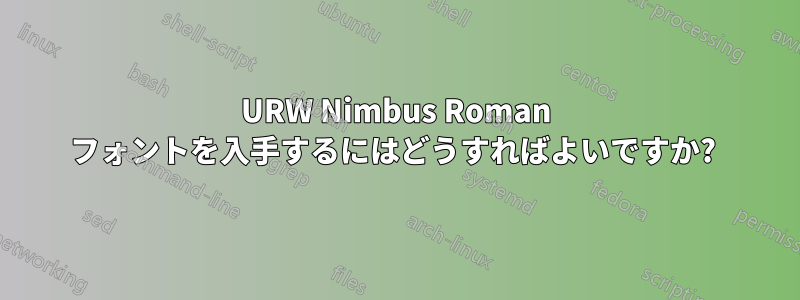
答え1
これは、Mac の LibreOffice のデフォルト オプションであると思われるフォントである Liberation Serif に似ており、外観は Times New Roman に非常に似ています。
XeLaTeX はシステム フォントをどれでも使用できます。そのため、必要なフォントがインストールされている場合は、他のフォントと同様にそのフォントをドキュメントに含めるだけです。これは言語ごとに行うこともできます。たとえば、ドキュメント内のタイ語テキストに Angsana New フォントを使用する場合は、次のように定義できます。
\usepackage{polyglossia}
\setmainlanguage{english}
\setotherlanguage{thai}
\newfontfamily\thaifont[Script=Thai, Renderer=AAT]{Angsana New}
XeTeX または LuaTeX でパッケージを使用するとfontspec、システムにインストールされている任意の TTF フォントも使用できるようになります。詳細については、こちらをご覧ください。LaTeX に TTF フォントをインストールする
URW Nimbus Roman フォントはここからダウンロードできるようです:https://www.fontsquirrel.com/fonts/nimbus-roman-no9-l
答え2
TeXLiveにはNimbusファミリー用のフォントが含まれています(https://ctan.org/pkg/nimbus15)。他のソリューションよりもアドオンとしてロードする方が適している可能性がありますので、ドキュメントをお読みください。
\documentclass[]{article}
\usepackage{iftex}
\iftutex
%% LuaLaTeX or XeLaTeX
\usepackage{fontspec}
\setmainfont{ztm}
\else
%% pdfLaTeX
\usepackage{nimbusserif}
\fi
\begin{document}
\section{Introduction}
In this article I address the question whether, and if so in what sense, logic
can be said to have normative authority over reasoning. I claim that there is an
interesting sense in which logic can indeed be said to be normative for
reasoning. To substantiate my claim, I proceed as follows. I begin by laying
out Gilbert Harman's influential skeptical challenge to the thesis that logic
and norms of reasoning are interestingly related. According to Harman, once we
realize that principles of deductive logic are not nrms of reasoning in and of
themselves, a gap opens up between the two. Thus, a response to Harman's
challenge would consist in what John MacFarlane (2004) has fittingly dubbed a
`bridge principle'---a general principle articulating a substantive and
systematic link between logic
\end{document}
LuaLaTeX を使用した結果:




